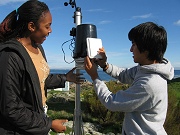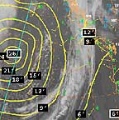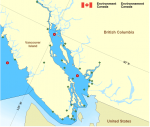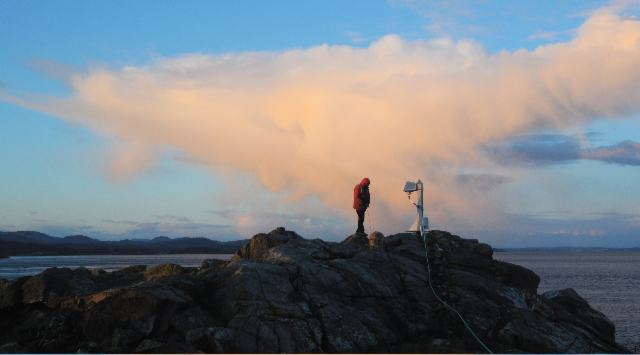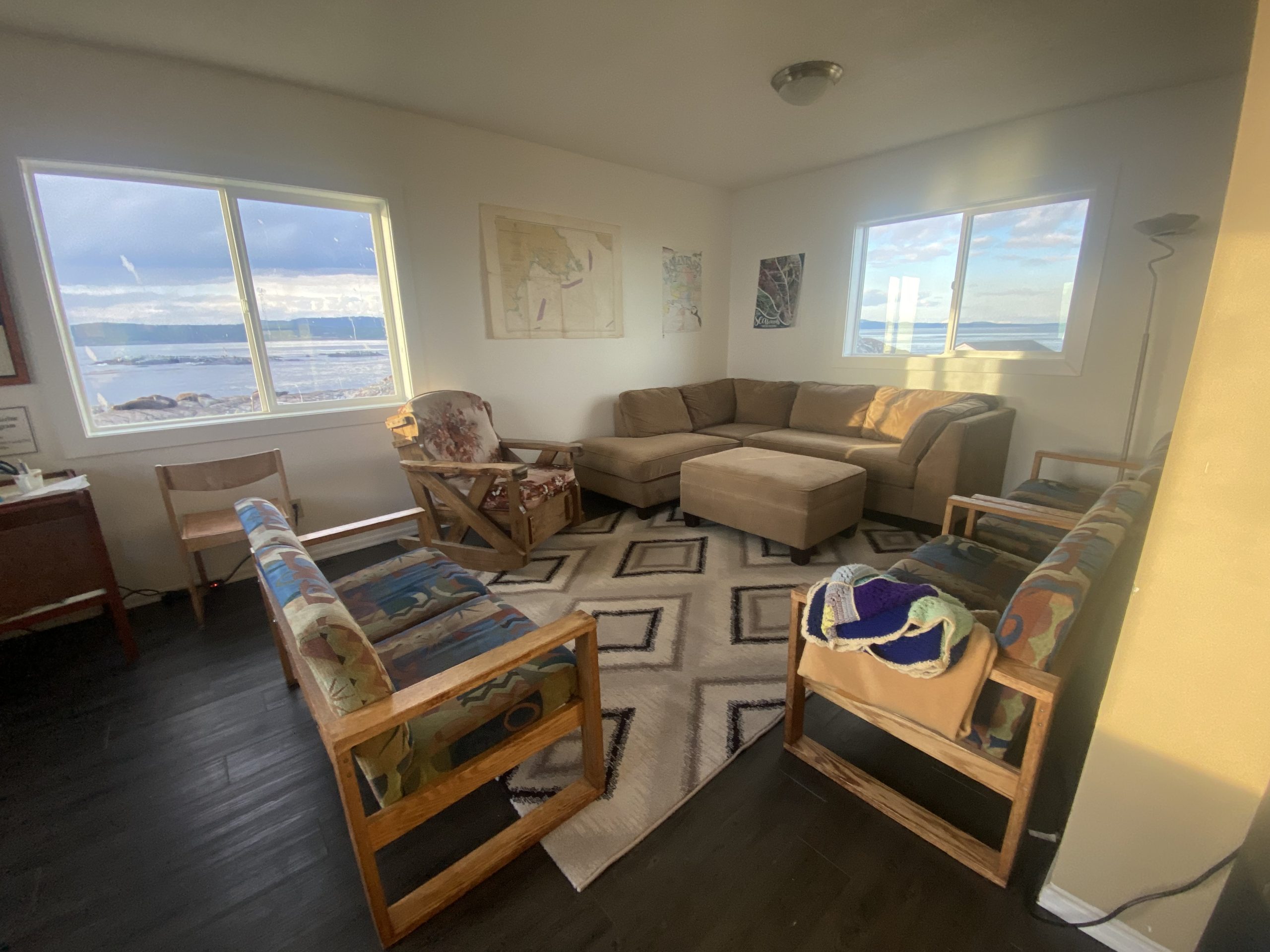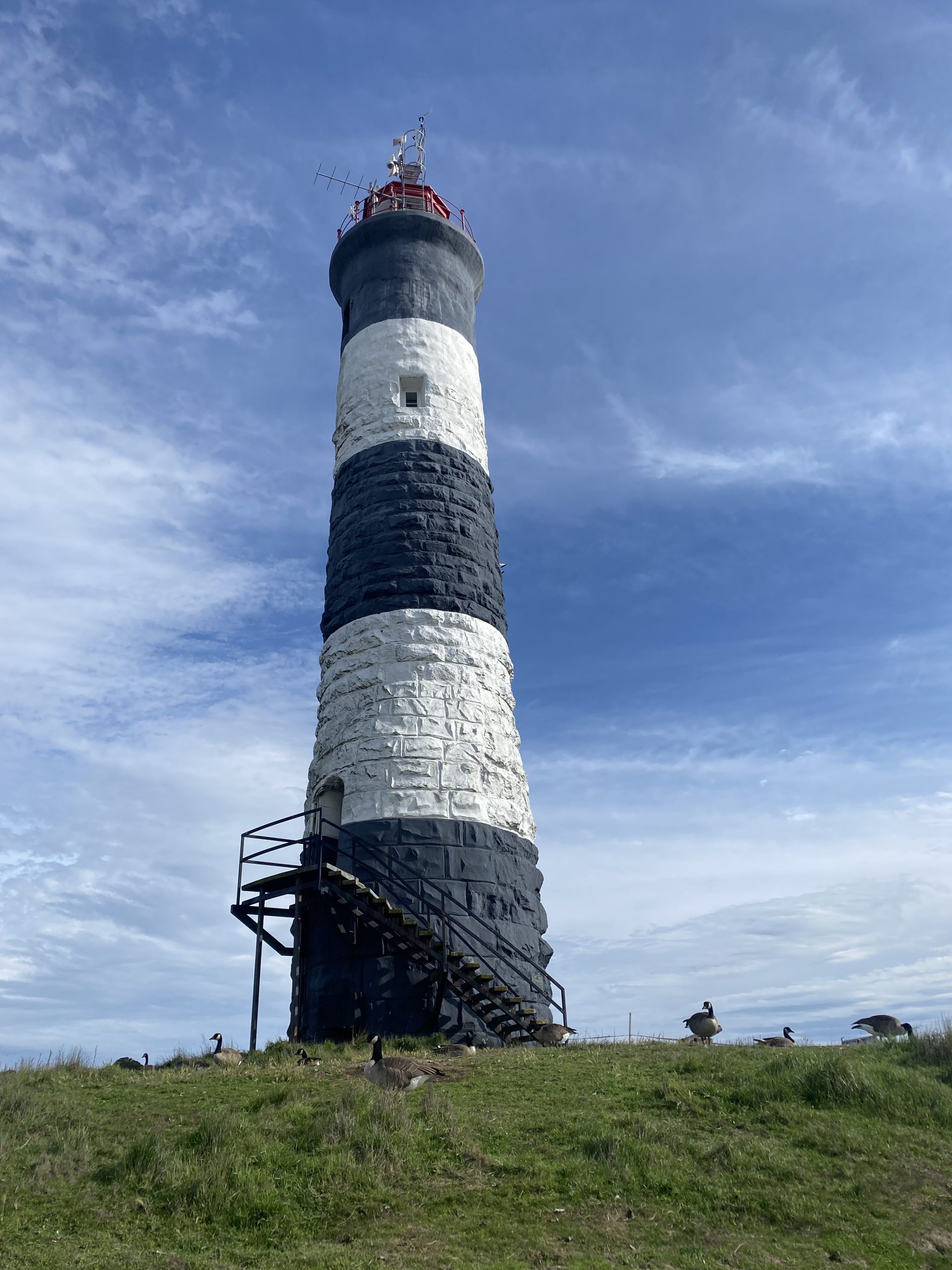The UVic School Based Weather Station Network. funds and operates this Davis instrument weather station at Race Rocks in partnership with Lester B. Pearson College of the Pacfic. For Large Sized graphs refer to the Uvic site here:
Records are shown for Temperature and Dewpoint, Atmospheric pressure, Relative Humidity, Wind Speed and Wind Direction, Rain, Hourly rain, Sun, UV, Wind Roses for Speed and Direction and Dew Point
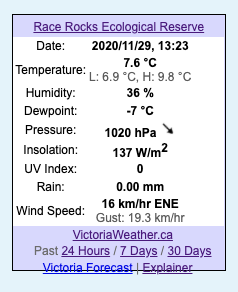 CURRENT SUMMARY of WEATHER at RACE ROCKS
CURRENT SUMMARY of WEATHER at RACE ROCKS
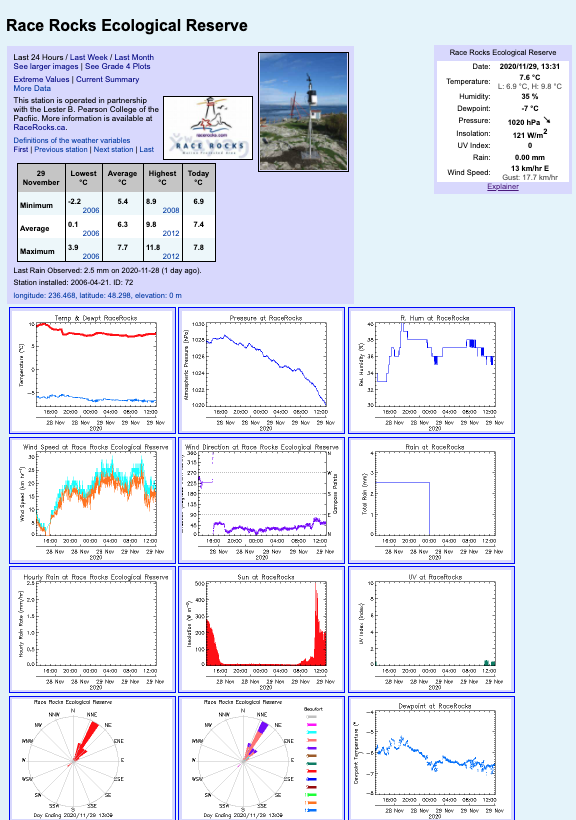 Last 24 hours of Weather Data from Race Rocks Ecological Reserve
Last 24 hours of Weather Data from Race Rocks Ecological Reserve
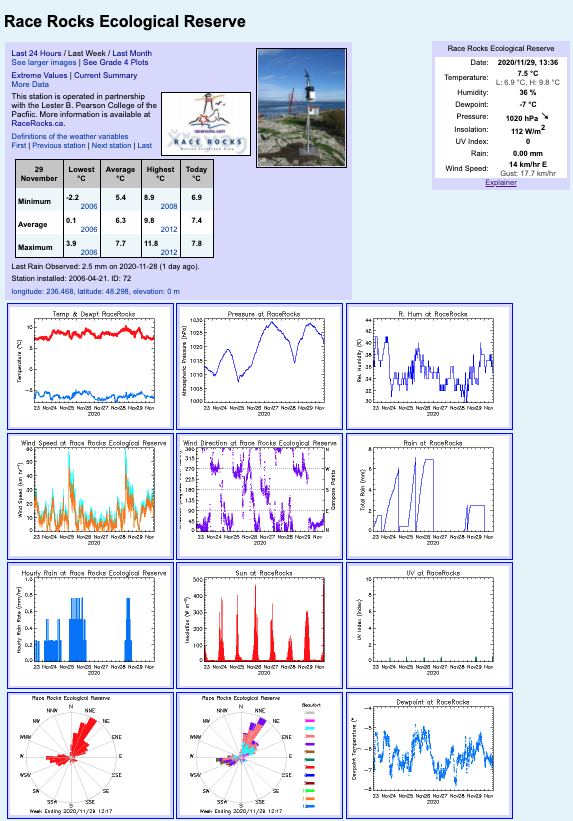 The last week of Weather records for Race Rocks Ecological Reserve
The last week of Weather records for Race Rocks Ecological Reserve
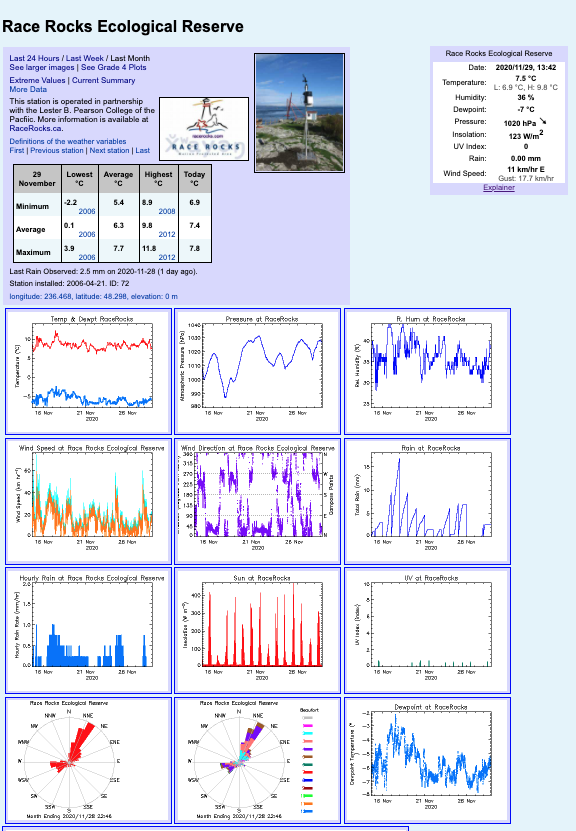 Weather Records for the last Month at Race Rocks Ecological Reserve
Weather Records for the last Month at Race Rocks Ecological Reserve
Wind Records at Race Rocks
Wind as an Abiotic Factor
This wind direction is taken at ground level. There is often a 10 knot difference between ground and tower values. Updated every 30 minutes.
Atmospheric Pressure/ Barometer at Race Rocks
Barometric Pressure as an Abiotic Factor
Temperature at Race Rocks
Temperature as an Abiotic Factor
Solar Radiation at Race Rocks
Solar Energy an Abiotic Factor
Ultra Violet Radiation at Race Rocks
UV as an abiotic factor
Humidity for Today and this week at Race Rocks
Humidity as an Abiotic Factor at Race Rocks
Dew Point at Race Rocks
Dewpoint as an abiotic factor
Rainfall for Today and past records at Race Rocks
Rainfall as An Abiotic Factor at Race Rocks
================================================
(January was under recorded)
(March and April machine fault)
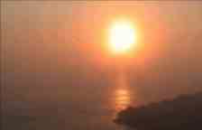 Abiotic Factors index: data explained in terms of effects on ecosystem. Also the Abiotic Factors Link has an explanation of the importance of the various physical environmental factors in the structure of the Race Rocks Ecosystems
Abiotic Factors index: data explained in terms of effects on ecosystem. Also the Abiotic Factors Link has an explanation of the importance of the various physical environmental factors in the structure of the Race Rocks Ecosystems
The recording instrument with sensors used for real-time weather plotting from ground level at Race Rocks

Juan de Fuca East entrance forecast
For conditions right now from Environment Canada use this link
<style=”–darkreader-inline-bgcolor: #ad2b00;” bgcolor=”#ff6633″ data-darkreader-inline-bgcolor=””>
The records above are recorded at Pacific Daylight Savings Time < style=”–darkreader-inline-bgcolor: #ad2b00;” bgcolor=”#ff6633″ data-darkreader-inline-bgcolor=””>
< style=”–darkreader-inline-bgcolor: #ad2b00;” bgcolor=”#ff6633″ data-darkreader-inline-bgcolor=””>
Extreme Values for environmental factors at Race Rocks recorded since 21 April, 2006November / December Extreme weather events: November 26/06 Snow……. December 15/06 Hurricane

